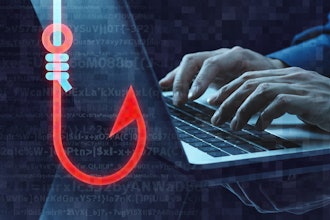
The explosion in data-driven workplace safety measures has created a complex ecosystem of sensors, wearable devices, AI analytics, cloud computing solutions, and IoT-connected machinery. As AI and other cutting-edge technologies increasingly permeate workplace safety practices, data privacy, and security have transcended their roles as supplementary features and now stand as integral, foundational elements of an organization's technological architecture.
Indeed, this complex interweaving of technology and data comes with challenges. The integrity and confidentiality of this data must be maintained across various platforms, during transmission between devices, and in storage (whether on-premises or cloud-based). The challenge also extends to ensuring compliance with international regulations such as GDPR and HIPAA, which impose stringent requirements on data handling.
The technical measures involved in protecting this data are intricate and multifaceted, requiring robust encryption techniques, meticulous access control protocols, comprehensive monitoring systems, and a well-thought-out incident response strategy. More importantly, there is a growing need for transparent and ethical handling of this data, as employees and regulators demand clarity on data usage, retention policies, and consent mechanisms. This multi-dimensional problem requires a convergence of technology, legal compliance, ethical consideration, and continuous vigilance.
Understanding the Data Landscape
First, let's summarizes the different types of data collected, the specific technologies and applications involved, and the accompanying risks and challenges.
Unauthorized Access. In an environment filled with multifaceted data, the risk of unauthorized access looms large. Potential breaches can lead to data theft, compromising personal information like employees' health statistics and critical operational details such as machine maintenance records.
Compliance with Regulations. Ensuring adherence to legal requirements like the General Data Protection Regulation (GDPR) and the Health Insurance Portability and Accountability Act (HIPAA) poses another set of challenges. The complex regulations dictate specific protocols for handling, storing, and transmitting data, and non-compliance can result in severe penalties.
Data Sovereignty and Localization Laws. Different jurisdictions have varying regulations concerning where data must be stored and how it must be handled.
Integration Complexity. With various tools and platforms collecting different types of data, integrating them securely adds layers of complexity. The interplay between Vision AI, wearable devices, cloud storage, and other technologies necessitates a robust framework that maintains data integrity across all touchpoints. The failure to properly integrate these elements can create vulnerabilities, leading to potential data leakage or inconsistent application of security measures.
Human Error and Insider Threats. Even with the most advanced technological safeguards in place, human error remains a risk. Mistakes in configuring security settings, failure to follow protocols, or intentional insider misconduct can lead to exposure of sensitive information. Ongoing training and monitoring are essential to mitigate these risks, but they remain an ever-present challenge in the dynamic landscape of workplace safety technologies.
Implementing robust encryption and stringent access control measures is no longer optional in today's technology-driven world. These practices form the backbone of modern data security, reflecting the industry's commitment to safeguarding sensitive information.
At Rest. Data at rest refers to all data stored in physical or virtual disk drives, databases, and other storage media. Ensuring the confidentiality of this data is vital. This can be achieved using advanced encryption algorithms like AES-256, which provides high security. The key management associated with this encryption is vital as it ensures that the keys are only accessible to authenticated entities.
Defining User Roles. RBAC is a method of restricting system access to authorized users. In an RBAC policy, roles are created for various job functions, and permissions to perform certain operations are assigned to specific roles. Users are then assigned appropriate roles and, through those role assignments, acquire permissions to perform particular computer-system functions. This ensures that only the necessary individuals have access to specific parts of the system.
Multi-Factor Authentication (MFA). MFA is a method of control in which a user is granted access only after successfully presenting two or more separate pieces of evidence to an authentication mechanism. These can be something you know (a password), something you have (a mobile device), or something you are (a fingerprint or other biometric data). MFA adds an additional layer of security, significantly reducing the likelihood of unauthorized access.
Zero Trust Architecture. This approach assumes no user or system can be trusted, whether inside or outside the organization's perimeter. Access is granted based on continuous authentication and authorization, and many leading companies use it to prevent unauthorized data access.
Secure Key Management. This includes implementing a secure process to manage cryptographic keys, including the generation, storage, distribution, rotation, and deletion of keys. Proper key management is essential to the overall security of encryption strategies.
Machine Learning and AI-driven Anomaly Detection. Leveraging machine learning algorithms to detect suspicious activities or deviations from normal behavioral patterns. These AI-driven techniques can provide real-time insights and facilitate proactive security measures.
Integration with Identity and Access Management (IAM). Aligning RBAC with IAM systems, ensuring that permissions are granted according to the principle of least privilege and are constantly updated as roles within the organization change.
Utilization of Hardware Security Modules (HSMs). Storing encryption keys and other critical security data in HSMs, which provide robust physical and logical protection against unauthorized access and tampering.
Cloud Security Measures
As businesses increasingly rely on cloud providers for storing, processing, and managing workplace safety data, the need for stringent and comprehensive cloud security practices has never been more pressing.
Compliance Certifications and Data Sovereignty. Providers must adhere to rigorous standards like ISO 27001, which ensures a systematic approach to managing sensitive information and maintaining a robust information security management system (ISMS). This involves implementing access controls, encryption methods, regular assessments, and continuous monitoring. Data stored on the cloud is also subject to data sovereignty and localization laws. These laws stipulate that certain types of data must be stored within specific geographic locations or jurisdictions, thereby governing how and where data can be transferred and processed.
Disaster Recovery Plans. Developing and maintaining disaster recovery and business continuity plans, including regular testing to ensure prompt recovery from unexpected events such as hardware failures, natural disasters, or cyber-attacks.
Data Redundancy and Backup. Implementing data redundancy and backup strategies to prevent data loss, using solutions like RAID configurations, scheduled backups, and replication across multiple data centers.
Vendor Risk Management. Assessing and managing the risks associated with third-party vendors, including cloud providers, requires ongoing diligence. This includes evaluating the vendors' own security controls, certifications, incident response capabilities, and alignment with the organization's security and compliance requirements.
Monitoring and Incident Response
A cohesive approach that combines real-time monitoring with a well-defined incident response plan is vital to the integrity of data security.
Security Information and Event Management (SIEM). SIEM systems aggregate and analyze security events from various sources within the technology infrastructure. By correlating different data points and employing complex algorithms, SIEM enables a holistic view of the security environment, facilitating quicker identification of suspicious activities and potential breaches.
Immediate Action Protocols. These protocols define the steps that must be taken to contain and assess a security breach swiftly. It includes isolating affected systems, notifying relevant stakeholders, gathering forensic evidence, and implementing temporary security measures to prevent further intrusion.
Post-Incident Analysis. After resolving an incident, conducting a thorough evaluation is key to understanding the root cause, assessing the overall impact, and developing preventative measures for the future. It involves a multidisciplinary review of the incident, identifying weaknesses in existing security measures, and formulating strategies to fortify defenses against similar threats in the future.
Integrating technology into workplace safety demands an equally robust and multifaceted approach to data privacy and security. It's a dynamic and continually evolving field where innovation must be balanced with responsibility. The detailed measures and strategies outlined in this article provide a roadmap for organizations aiming to harness modern technology's power without compromising the data's privacy and security that underpins their safety initiatives.
With the ever-changing technological landscape, vigilance, continuous adaptation, and a proactive approach to emerging threats and opportunities will remain key in safeguarding the privacy and integrity of workplace data. By maintaining this balance, organizations protect their most valuable assets and foster a culture of trust and responsibility that can drive ongoing innovation and success.


















